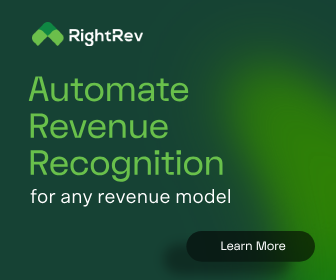COVID-19 has been around for a year now, and as we celebrate the one-year anniversary of having fifteen days to slow the spread, we’re still trying to figure out what’s going on. Economic forecasts keep changing and rules keep adjusting. But even as vaccinations continue, there’s a lot of uncertainty on what’s on the horizon.
Some of us are optimistic, picturing a nearly complete recovery by the end of 2021. Others see this happening a quarter later, and others are more pessimistic.
So much hangs in the balance. Leaders are asking when to reopen, what to do, and what normal will look like when the “mission accomplished” banner gets hung. But the reality is going to be nuanced. This according to the recent report from Deloitte, asking what a post-COVID economy will look like. Combining surveys, economist interviews, and more, their report looks at the evolution of the economy after this dark winter.
From Endless Winter to New Dawn: What Might a Post–COVID-19 Economy Look Like?
Looking back at their initial studies, Deloitte noted that in Q2 2020, during the lull in cases, the outlook was mixed. At the time of the Q2 CFO Signals study, almost one-third (32%) of respondents expected to be back to a pre-crisis level of operations by the end of 2020, and 42% agreed with that assessment in the Q3 2020 edition.
But recently, things looked less optimistic. In the most recent survey, nearly two-thirds of respondents said they do not expect to return to pre-crisis levels until the second half of 2021 or later, and 26% do not expect to get there until Q1 2022 or beyond.
Four Outcomes for the COVID Economy in 2021
For controllers and other finance leaders, this uncertainty affects planning. Luckily, Deloitte brought in their economists to make sense of it all, predicting four outcomes to look for in the next year.
“Each new scenario posits a potential future state leading to corresponding economic implications. And while many CFOs may have already completed their 2021 budgeting and planning cycles, the scenarios offer insights into some of the nuances of the pandemic, as well as possible impacts on the US, Europe, Asia/ Pacific, and global economies.”
1) Endless Winter
Estimated date by which pre-COVID-19 GDP level reached in the US: Q3 2022; Globally: Q4 2021.
Earlier this year, we were promised a dark winter. Despite having multiple vaccines available, the Biden Administration set low expectations, telling us to brace for a dark winter. Deloitte saw this scenario and in it highlighted the following:
“In this scenario, the high hopes associated with the vaccines are muted by ongoing distribution challenges that result in far fewer shots delivered than the number needed to control the pandemic. […]
Widespread skepticism of the vaccine means that even places that have access can’t reach herd immunity—and continued mutations spread more quickly than the virus itself. As a result, the pandemic and its restrictions are felt globally far into 2021.”
2) Hard Rain
Estimated date by which preCOVID-19 GDP level reached in the US: Q2 2022; Globally: Q4 2021.
Looking at the world in the event that vaccines and herd immunity slowly gain traction, this looks at a world where despite this, policy has crippled small businesses to an extent where recovery is slowed.
“After some initial bumps, vaccination programs are embraced, so by late spring, a significant number of people living in advanced economies are ready to get back to normal.
One problem: normal isn’t ready for them. Ineffective policy has meant that many small and medium businesses haven’t been able to survive 15 months of pandemic.
Bankruptcies become common, debt burdens have become unmanageable, and there’s a growing wave of defaults. The resulting demand-side shock in some of the world’s largest economies sends ripples around the world.”
3) A New Dawn
Estimated date by which pre-COVID-19 GDP level reached in the US: Q3 2021; Globally: Q2 2021
Looking at 2021 as a year in which good things keep rolling, the new dawn scenario has some optimism. According to Deloitte,
“If 2020 seemed to hit one low after another, 2021 turns out to be the antidote. […] Herd immunity is reached over the summer for wealthy countries and is on track for most emerging countries. Meanwhile, policymakers and central banks respond with strong stimulus, allowing businesses to remain stable, steadying employment, and maintaining consumer confidence.
Moreover, the measures to suppress the virus open the door for economic activity to rebound. The result: a wave of confidence that unlocks new business investment, new consumer spending, and new public infrastructure.
4) Sun Showers
Estimated date by which preCOVID-19 GDP level reached in the US: Q4 2021; Globally: Q2 2021.
A bit less optimistic than the new dawn scenario, this plays realism and optimism, highlighting a few uncertainties on distribution and distrust.
“The calendar may have turned, but the unexpected lingers. The most disappointing surprise is that even with multiple vaccines approved, the logistics of reaching billions are unachievable.
Weaknesses of distribution, distrust, and a disease that begins spreading faster than the human response are implacable. But another, more positive, surprise, emerges: the political conflicts that marked 2020 yield to growing confidence in some of the world’s most influential markets.
Strong government support of business and workers in the US, as well as consistent health mandates, help maintain economic activity. And those supports created through effective policy buy time for the vaccines to make a difference.”
Learn More: Full Analysis from Deloitte
Whichever the scenario, it’s important to have the right approach. For those looking at the ways that this may impact corporate planning and the ways finance leaders should confront the possibilities, the entire report looks at just this. Get to know more about each scenario in the Deloitte Perspective, What Might a Post-COVID Economy Look Like?
For all the latest advice on how you can prepare for whichever scenario that comes about, the Controllers Council is here for you. Sharing all the latest news and analysis, we have a variety of resources on the future of work, and will be announcing a return to normalcy roundtable shortly.
Additional Resources
Year-End in the COVID Era: Understanding the Challenges
Three More Metrics to Look at on Your Road to Recovery
Has the Coronavirus Given Corporate Finance a Taste for Technology?




